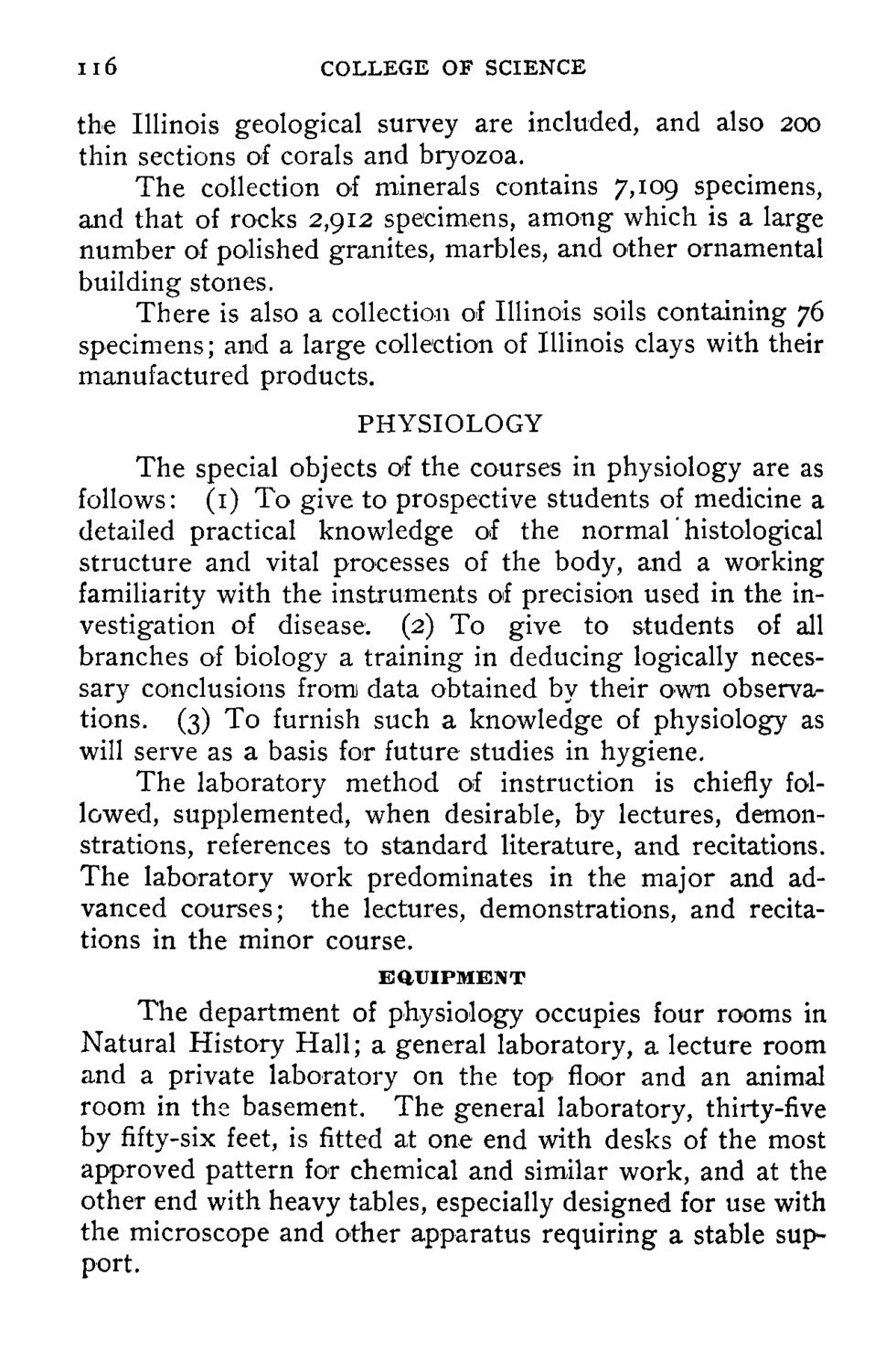| |
| |
Caption: Course Catalog - 1897-1898
This is a reduced-resolution page image for fast online browsing.

EXTRACTED TEXT FROM PAGE:
Il6 COLLEGE OF SCIENCE the Illinois geological survey are included, and also 200 thin sections of corals and bryozoa. The collection of minerals contains 7,109 specimens, and that of rocks 2,912 specimens, among which is a large number of polished granites, marbles, and other ornamental building stones. There is also a collection of Illinois soils containing 76 specimens; and a large collection of Illinois clays with their manufactured products. PHYSIOLOGY The special objects of the courses in physiology are as follows: (1) To give to prospective students of medicine a detailed practical knowledge of the normal'histological structure and vital processes of the body, and a working familiarity with the instruments of precision used in the investigation of disease. (2) To give to students of all branches of biology a training in deducing logically necessary conclusions from data obtained by their own observations. (3) To furnish such a knowledge of physiology as will serve as a basis for future studies in hygiene. The laboratory method of instruction is chiefly followed, supplemented, when desirable, by lectures, demonstrations, references to standard literature, and recitations. The laboratory work predominates in the major and advanced courses; the lectures, demonstrations, and recitations in the minor course. EQUIPMENT The department of physiology occupies four rooms in Natural History Hall; a general laboratory, a lecture room and a private laboratory on the top floor and an animal room in the basement. The general laboratory, thirty-five by fifty-six feet, is fitted at one end with desks of the most approved pattern for chemical and similar work, and at the other end with heavy tables, especially designed for use with the microscope and other apparatus requiring a stable support.
| |